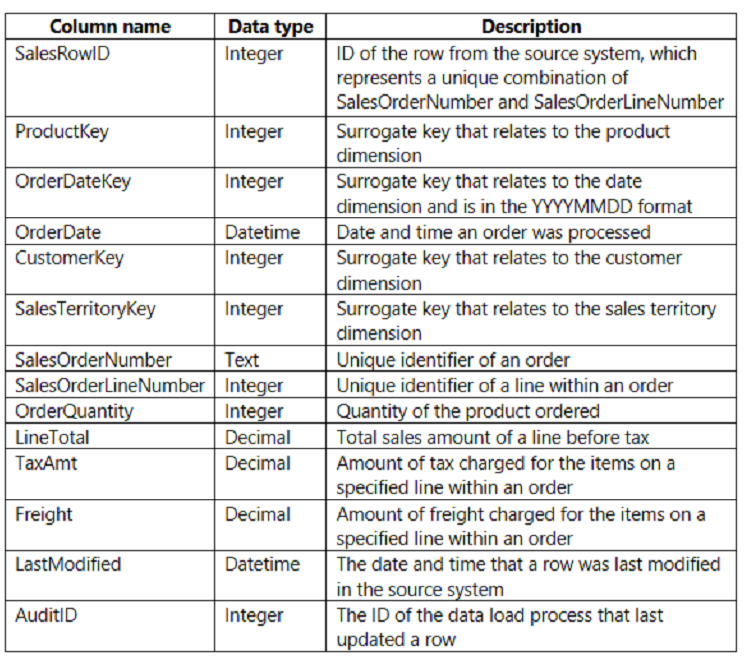

HOTSPOT -
You are creating a Microsoft Power BI imported data model to perform basket analysis. The goal of the analysis is to identify which products are usually bought together in the same transaction across and within sales territories.
You import a fact table named Sales as shown in the exhibit. (Click the Exhibit tab.)
The related dimension tables are imported into the model.
Sales contains the data shown in the following table.
You are evaluating how to optimize the model.
For each of the following statements, select Yes if the statement is true. Otherwise, select No.
NOTE: Each correct selection is worth one point.
Hot Area:

simplex06
Highly Voted 2 years, 7 months agoWadyba
Highly Voted 2 years, 5 months agocnmc
2 years, 4 months agocs3122
1 year, 3 months agodopass
2 years, 4 months agomomo1165
1 year, 3 months agoolalekanadedoyin
Most Recent 1 month agojaume
5 months, 1 week agoseffy
5 months, 4 weeks ago23042b9
6 months, 1 week agoMichaelZheng
6 months, 3 weeks agorcaliandro
8 months, 1 week agoEndeetheanalyst
8 months, 2 weeks agoagelee
9 months, 2 weeks agowassefriahi
11 months agoJohnChung
1 year, 3 months agoAbuAbdillah
1 year, 3 months agoBarNouha
1 year, 6 months agoJudec
1 year, 6 months agorick1997
1 year, 6 months agorainy_255
1 year, 6 months agotke44
1 year, 11 months ago